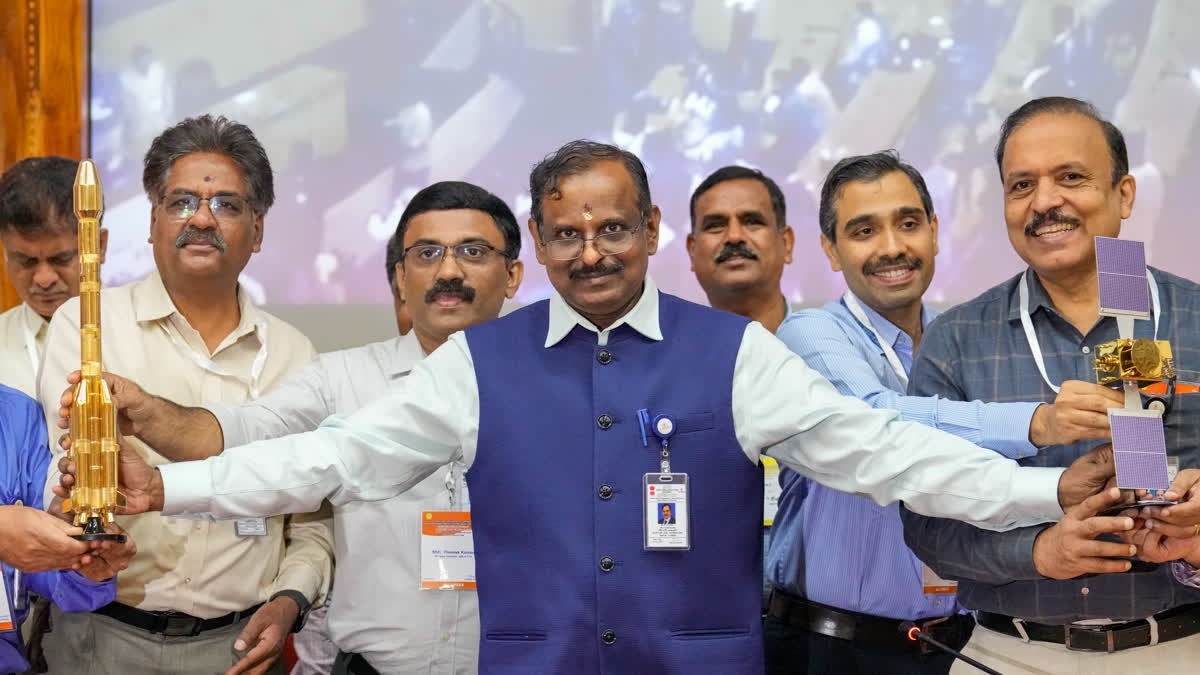100 Missions In Next 5 Years? Why Not, Says ISRO
31 Jan 2025 14:29:27

Sriharikota : ISRO may have taken 46 years to achieve
the 100-mission milestone but the country's space agency is now confident of
scoring the next century in a relatively quicker time--half a decade.
Indian Space Research Organisation (ISRO) Chairman V
Narayanan, who oversaw its 100th mission on Wednesday, the GSLV F-15/NVS-02
navigation satellite launch, exuded confidence the space agency could breach
the 200-mark in five years.
Responding to a query whether it was possible to make
100 launches over the next 5 years, Narayanan replied in the affirmative.
"You are asking the right question.
It is
possible," he replied without elaborating.
Scripting history, ISRO has travelled from the era of
rocket parts being transported on cycle and bullock cart, pictures that bring
vivid memories, to catapulting into one of the world's premier space agencies
that is now into commercial launches for foreign vendors. ISRO is part of an
exclusive league which has forayed into the Moon and Sun.
Earlier on Wednesday, ISRO celebrated its 100th mission
with the textbook launch of NVS-02, part of the NavIC constellation that would
aid in terrestrial, aerial and maritime navigation and precision agriculture,
among others, with the GSLV rocket injecting the payload in the desired orbit.
So far, ISRO has developed six generations of launch
vehicles, with the first one taking shape under the guidance of Prof Satish
Dhawan and with former President APJ Abdul Kalam as the project director, in
1979.
It was SLV-3 E1/Rohini Technology payload.
46 years later, ISRO has lifted 548 satellites to
orbits, 120 tonnes of payload including 23 tonnes of 433 foreign satellites
while on its way to the 100th mission, Narayanan said.
Talking to reporters after the success of today's
mission, Narayanan also dwelt on the future missions.
ISRO's collaborative effort with NASA, the NISAR
mission, was likely to be launched in a couple of months.
Other projects currently engaged by the space agency
include NGLV, among others.
Narayanan, Secretary, Department of Space said the
NASA-ISRO joint collaboration Synthetic Aperture Radar satellite mission
(NISAR) was expected to be launched in a couple of months.
"It is joint collaboration between NASA and ISRO.
There are two radars--one is L band Radar (developed by ISRO) and S band Radar
developed by Jet Propulsion Laboratory, NASA. The whole system has been
integrated and tested at U R Rao Satellite Centre (in Bengaluru). It is ready
to be transported from U R Rao Satellite Centre to Sriharikota" he added.
Asked how many more navigation satellites need to be
launched for India to have its own constellation, he said, "Right now,
four satellites are operational."
On the proposed rocket launches scheduled to be held
from Kulasekarapatinam in Tamil Nadu, the Chairman said "Now, we are
building facilities and within two years upon completion of the construction
activities, launches would be conducted regularly there."
Narayanan said ISRO also received approvals from the
Centre for building Next Generation Launch Vehicles (NGLV) which can carry
payloads weighing 20 tonnes to the low earth orbit or a 10-tonne payload to the
Geostationary Transfer Orbit.
There was a huge demand for these kinds of vehicles from
the industry, he said. Such launch vehicles would be used from the recently
announced third launch pad which will be set up at an outlay of Rs 4,000 crore.
He said NGLVs can be used in Chandrayaan 4 and 5 missions
and also in deep space missions.
Other future launches to be undertaken by ISRO include a
commercial flight of LVM3 by NewSpace India Ltd (NSIL) for a foreign customer,
a technology demonstration satellite TDS01 mission to validate almost 34
technologies which will be launched by the first PSLV realised by industry
consortium.